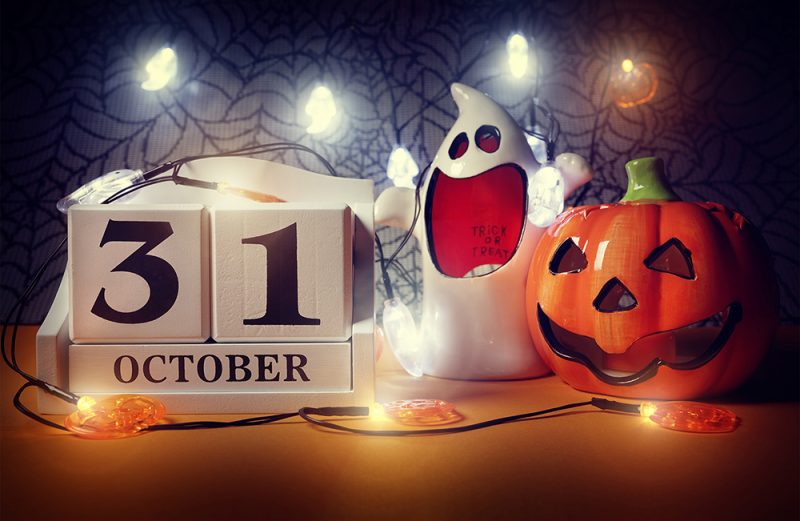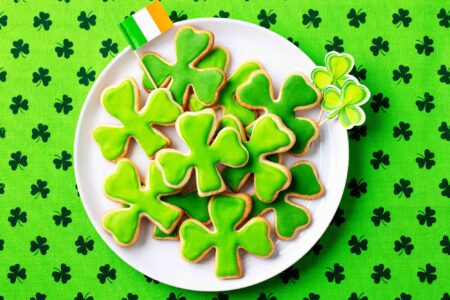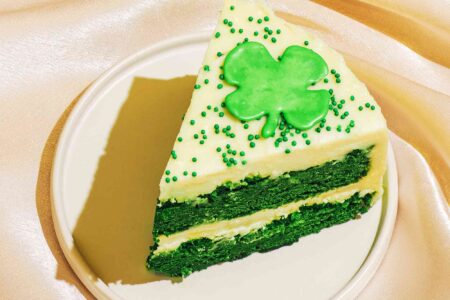History of Halloween – What is Halloween? Why does Halloween exist? Where did Halloween come from?
The origins of Halloween are shrouded in many ways. This is often the case with traditions and customs centered around the macabre.
The controversy surrounding religion’s role in shaping what we know as Halloween today can still provoke a heated debate and was very much a key influencer in Halloween's evolution.
Strong ties to traditions influenced by a lineage of generations, geographies, current events, and many more factors have shaped our perception of and how we celebrate Halloween. The history of Halloween and the story of its beginnings are vulnerable to bias interpretation and often skewed one way or another to reinforce their existing beliefs, to justify their actions, or to meet their agenda.
Regardless of Halloween’s history, it has evolved into a magical holiday, second only to Christmas in the United States. As much as 64 percent of Americans celebrate Halloween according to the report Halloween: Oct.31, 2015, released by the United States Census Bureau on October 26th 2015.
This makes October 31st a largely celebrated day and one of the most popular events of the year.
Halloween has become a significant commercial matter as well, generating revenue in excess of $6 billion annually according to Penn State News.
Consumers visit haunted attractions, attend parties, consume media in the horror genre, purchase significant amounts of candy, and of course buy costumes and decorations.
Where did it get it’s start?
In the mind of most people that observe it, Halloween is closely associated with the supernatural and death, this is said to be a result of the ancient Celtic culture. A festival called Samhain was conducted by the Celts at the end of their harvest season which falls on October 31.
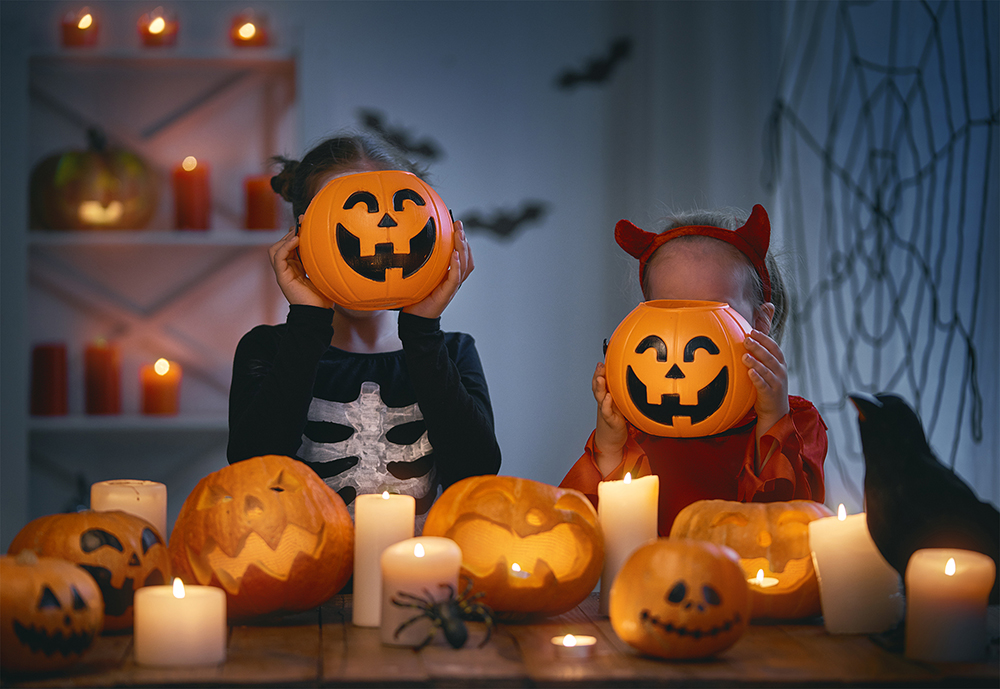
Early History of Halloween
Halloween has gone through many changes influenced by geography, religion, culture and customs, time, society and other mediums of transformation. 2,000 years back the Celts viewed the day as summer’s end and the beginning of the winter.
The day was important for the people who survived on agriculture, the fields and animals sustained life. The winter was viewed as the beginning of a dark time, when a higher percentage of deaths occurred. This was usually due to the lack of food or shelter, closely attributed to a poor harvest.
Druids were the holy men of the Celtic people, and it’s likely they were the ones to associate death and darkness with what we call Halloween today. The belief was held that the druids would have especially sensitive supernatural powers on Halloween. It was said they had premonitions, and could commune with the dead.
Benjamin Hudson, a professor of history and medieval studies at Penn State opines that the Celts believed the day was used by spirits to crossover the boundary of dead and living and all supernatural elements became more powerful. The day was also celebrated as the harvest’s end, and used by the people to track their produce and make arrangements for the winter.
The Origins of Halloween
So, how did Halloween evolve? How did a tradition so focused of death become so popular that it’s celebrated today all over the world?
Traditions, Superstitions and Practices
For most of us, Halloween involves dressing up in crazy costumes and handing out candy. For children, it involves the wonderful opportunity to knock on doors and collect massive amounts of candy.
Although dressing up in costume and Trick or Treating is an amazing experienced we cherished as a child, and instill in our children, it’s by far not the only tradition practiced across the world.
Various ancient rituals and observances tied to Halloween have led to many strange and often hilarious ways in which people celebrate today.
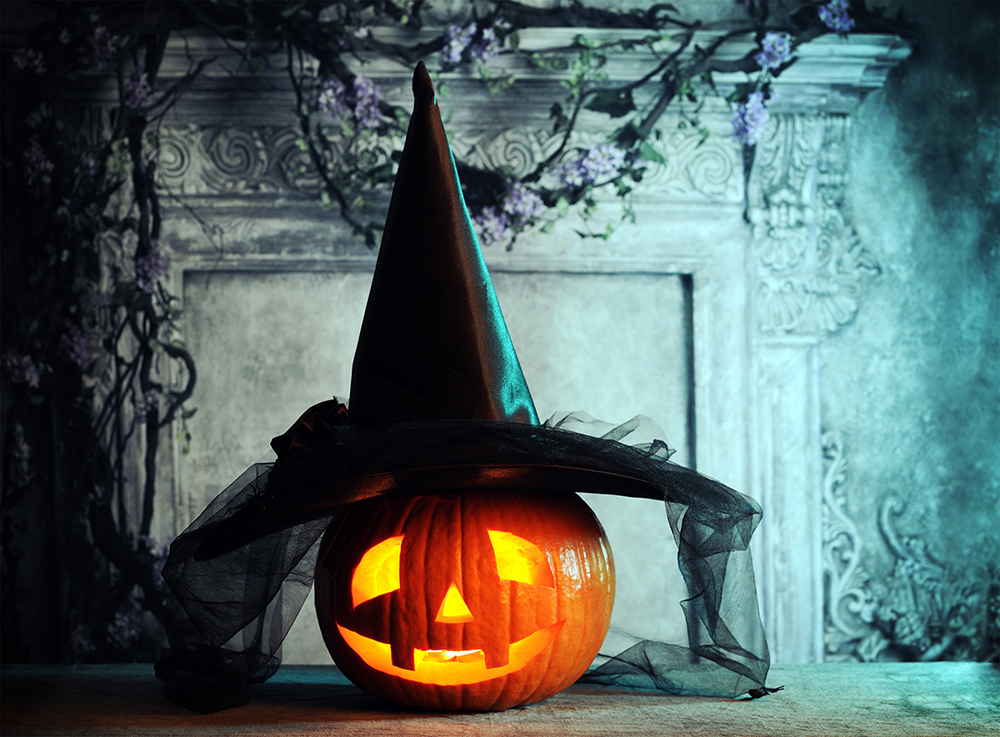
Bonfires
You won’t find stories like this associated with the origins of Christmas, in fact no other holiday is linked with superstitions, supernatural and horror as much as Halloween.
The Celtic druids performed bonfires to drive away the evil spirits but kept the doors of their homes opened so that the spirits of deceased loved ones might come in to pay them a visit. Members of the Celtic community that had passed away in the previous year might walk among them on that fateful night of October 31st.
Although most feared this and took action to ensure they would not be cursed by travellers from the land of the dead, some accepted and often encouraged such reunions.
It is also believed that the fire attracted insects to area which in turn drew bats to the vicinity. This may have been the early start to the custom of bonfires still prevalent on Halloween all over the world and one of the reasons bats are such a prominent symbol of Halloween in modern culture.
Dressing Up
The early Celts used to dress up in masks and costumes symbolising the evil spirits in an attempt to please them . The primitive costumes were made of animal hides and occasionally the animal’s decapitated head.
The costumes were also used in an effort to blend in with the evil spirits, as to not be singled out and haunted for the coming year.
Trick or Treating
The origins of Halloween Trick or Treating is still highly debated, and a perfect example of how some Halloween origins are clouded by various points of view.
One possibility is that it originated from the practice of leaving food outside of homes in an effort to distract harmful spirits. Dressing up and begging from door to door for food also was seen in the middle ages around Christmas, when the poor and hungry would lean on the generosity of others, a practice they called Christmas wassailing.
A similar kind of tradition was prevalent in Britain and Ireland during the late medieval ages called “souling”. On the day of Hallowmas on November 1, poor people would visit homes and pray for their dead in exchange of food (Live Science).
Hallowmas was a Catholic observation that was originally named “Hallow Mass” defines Hallow Mass as “The Roman Catholic Church’s official name for All Saints Day is Solemnity of All Saints’ Day, but it is also called Hallows or Hallowmas.”
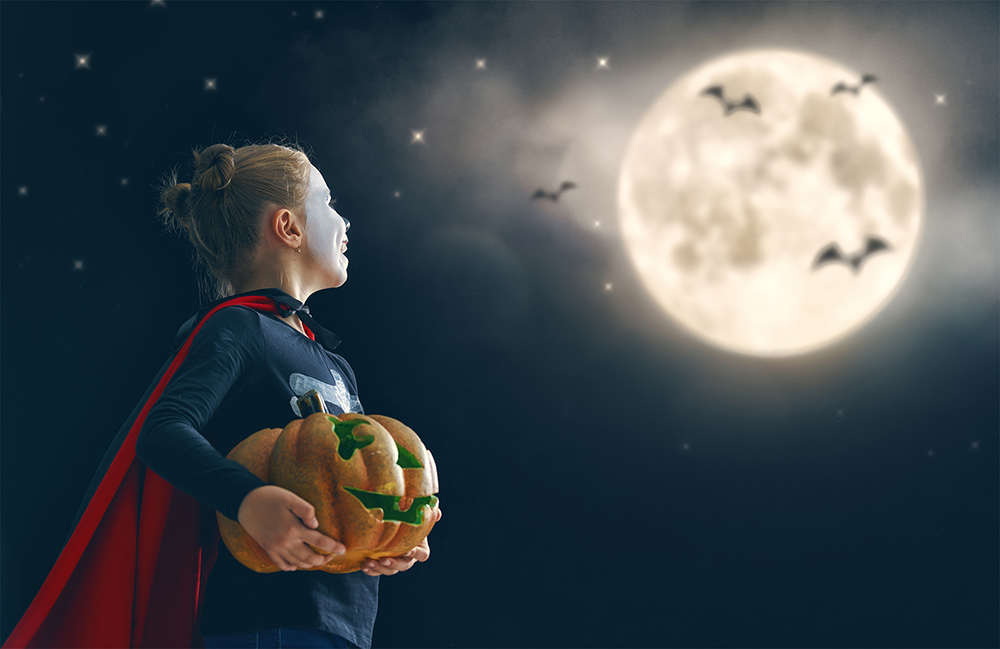
This is one of many ways the Catholic church adapted current traditions to better suite their agenda and ultimately impact the evolution of Halloween as we know it today. The church promoted the practice of visiting a fellow partitioner’s home to pray to overshadow the old custom of leaving food outside to ward off evil spirits.
The custom of “souling” was adopted by children gradually who visited neighborhood houses to receive food, drinks or money. Similar practices were also found in places like Italy, you can even find mention in one of Shakespeare’s comedies called The Two Gentlemen of Verona (1593).
As implied by the name, Trick or Treating was likely to have derived from committing a prank or trick on someone who refused the supply food when going from home to home.
Many viewed the day of Halloween as a time in which the supernatural may walk among us, this lead to widespread superstitions, which in turn presented itself as a wonderful opportunity to prey on the gullible members of the community.
Pranks and jokes were widespread, upturned wagons, blocked chimneys and anything else that might have been explained away as a supernatural act was fair game.
The people of Scotland and some other places to used would use costumes in an attempt to disguise themselves ago trick evil spirits.
Evolution of Halloween
While we all love Halloween today, it isn’t what it used to be before. Just like many other things, Halloween too has changed with time.
Here is how Halloween evolved down the years, from
Roman Impact
Most of the Celtic boundaries were conquered by Romans by 43 AD. The Romans combined the Samhain with two of their own festivals which was celebrated the same time as Halloween.
A festival called Feralia which commemorated the dead during late October was the first one to be incorporated. The other one was held to show respect to Pomona, the Roman goddess of trees and fruits.
Apple symbolizes Pomona, and the current ritual of “bobbing” of apples may have its start at this time.
Christian Impact
During the early Middle Ages local people started to convert to Christianity. The church in an attempt to win more converts would integrate pagan holidays and rituals into their religion. The Samhain was attempted to be replaced with All Saint’ Day (November 1) in 835 AD by Pope Gregory IV.
The All Saints Days was meant for all Christian saints and martyrs and established at the Western Church in 609 AD. But a Christian holiday called All Souls Day (November 2) resembled the Samhain and present Halloween more and the move was never successful.
The All Souls Day was meant for all the dead and the night before All Saints Day (All-hallowmas celebration) gathered the name of All-Hallows Eve and eventually Halloween.
Irish Impact
The Irish people were responsible for bringing the tradition of Halloween into America. The early Irish and Scottish immigrants arrived in North American and introduced Halloween’s history.
The custom and belief of the immigrants mixed with the culture of American Indians gave rise to the American version of Halloween.
The celebrations were limited to only a certain regions and included dance and songs, stories of dead, fortune telling and other public affairs related to harvest festivals. During the second half of nineteenth century, large number of people immigrated to America to escape the great famine in Ireland during 1846.
The tradition of Halloween became more popular and gained a national presence.
The Creation of Modern History of Halloween
The late 1800’s saw the rise in tradition of performing tricks on Halloween. The act of dressing up was considered fashionable and the celebrations got commercialised to some extent.
By this time it was possible to buy costumes manufactured specially for Halloween. The characters of the costumes expanded from the traditional witches and ghosts to include modern day princesses and politicians.
The practice of trick or treat did not find any mention in sources in UK, America or Ireland before 1900. A newspaper of North America reported the tradition of children dressing up and roaming the streets as early as 1911.
There were two more incidents reported in 1915 and 1920 in Chicago. But the term and practice of trick or treat does not appear in national publication till 1939. There were many Halloween postcards developed during the early nineteenth century depicting kids, but none of them showed any trick or treating.
There is also no mention of the game in a history of Halloween book written in 1919. Even though America received large number of immigrants from Europe since 1717, the concept of trick or treat did not appear in America’s Halloween history before 1930’s.
Many other countries saw the introduction of the festival of Halloween by the late twentieth century.
Halloween in the Present Day
The beginning of twentieth century saw Halloween losing out on its superstitions, religious influences and the horror aspect. From the late 1800’s there has been an initiative in America to make Halloween a community event. Halloween parties became the common way for celebration for kids and adults alike.
The common activities revolved around games, food and costumes. By 1920’s and 1930’s Halloween turned to a secular holiday centered on the community where parades and festivities over the town were held.
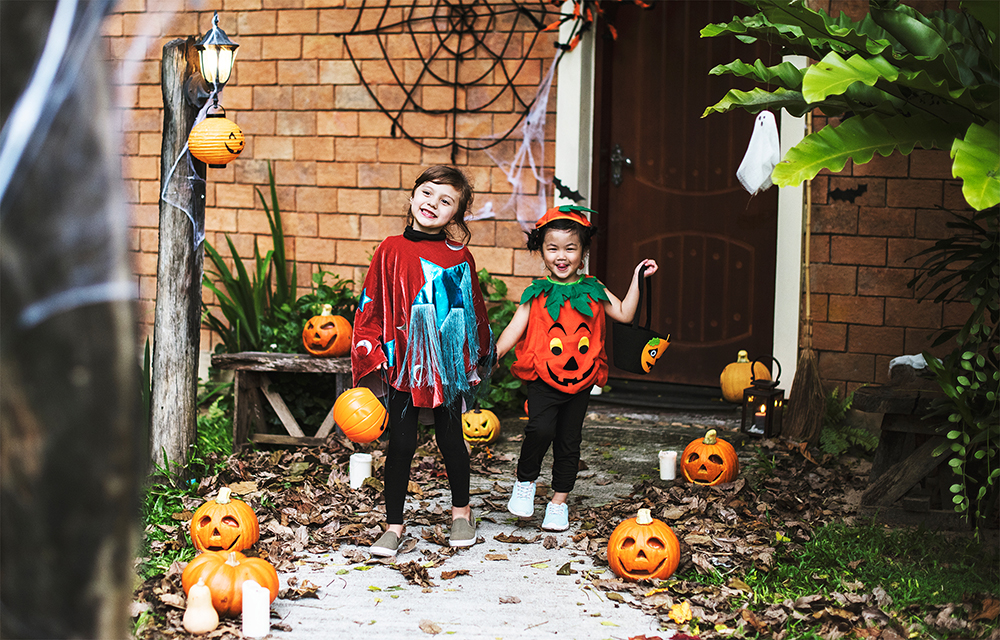
During this time there was a problem among the youth with increased cases of vandalism or serious pranks which required the police to mediate. The act of trick or treating was not familiar with the adults at this time and the children had to explain it to them. The reaction from adults also varied. Some agreed voluntarily while others reacted with anger or perceived it as a form of extortion.
During 1950, the holiday was introduced with a focus on the young population to steer it away from the vandalism issues. The leaders were able to control the vandalism situation and the present day Halloween found its foundation during this time. The trick or treat game also gained popularity during this period and became an inexpensive way for the community to help the children celebrate the festival.
The festival of Halloween is now celebrated in many countries over the world including America, UK, Ireland, Canada, Australia, New Zealand, Puerto Rico. The reach and growth or American media has popularised the concept of trick or treats all over the world, even with kids of Saudi Arabia.
Interestingly, United Kingdom is one place where the growth and resistance to celebration of Halloween has seen high levels. The cops in UK had issued warnings to initiate legal procedures against parents of kids found indulging in serious pranks or vandalism.
The numerous acts of violence and harmful ‘tricks’ have raised much apprehensions and opinions about Halloween and its celebration. Yet the celebrations of Halloween are widespread all over the world.
Currently it ranks as America’s second largest commercial holiday and generates annual revenue of approximately $ 6 billion.

